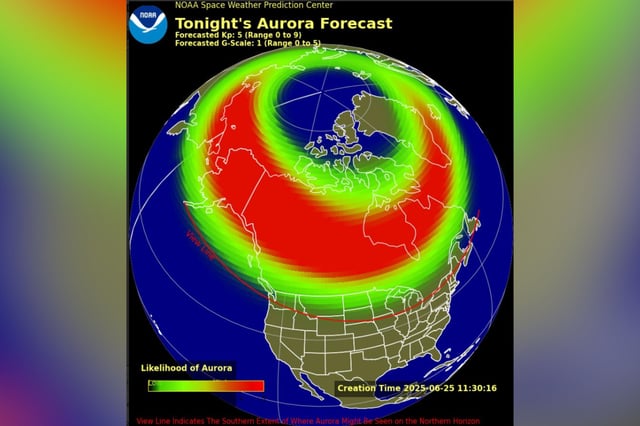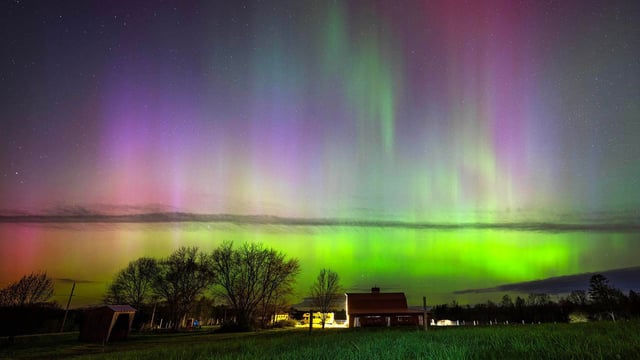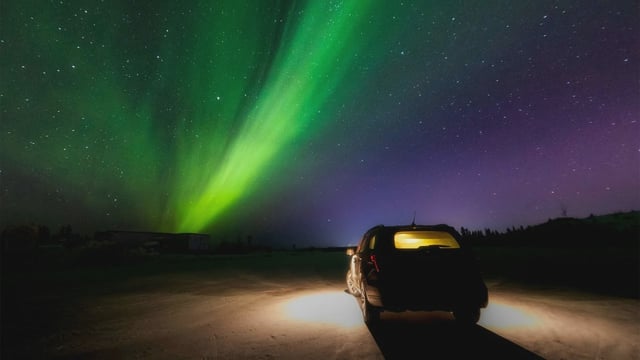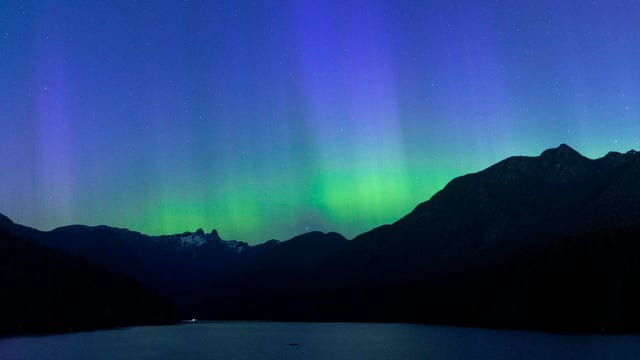Overview
- NOAA’s Space Weather Prediction Center predicts a Kp index of up to 5.67, signaling minor to moderate geomagnetic storms overnight.
- Auroras may be visible in 15 states, including Alaska, Washington, Montana, Minnesota, Michigan, New York and Iowa, reaching farther south than usual.
- The display is driven by a high-speed stream of charged particles from a solar coronal hole interacting with Earth’s magnetic field.
- Optimal viewing occurs between 10 p.m. and 2 a.m. local time away from city lights on a clear northern horizon.
- Shortened nights following the summer solstice could limit the window of darkness needed to see the aurora in higher latitudes.



